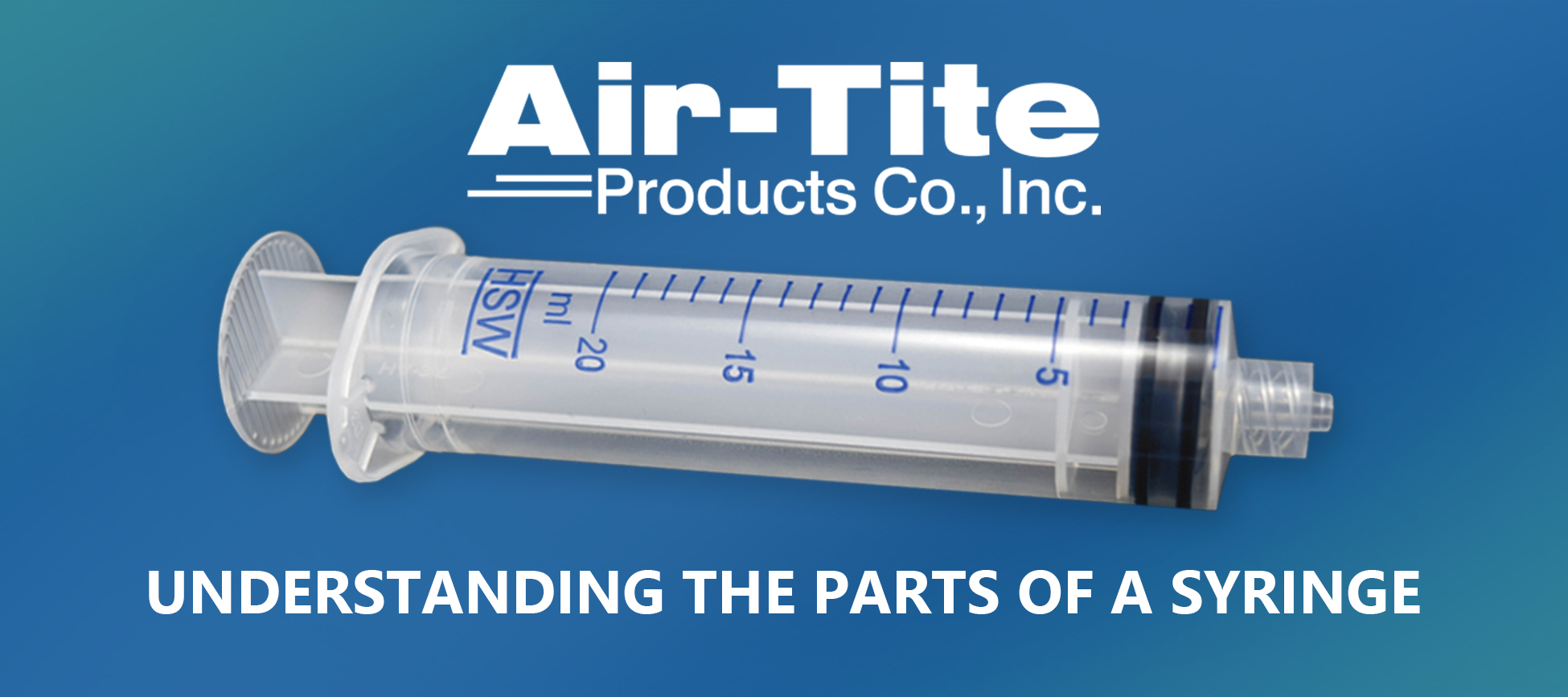
Syringes are an indispensable tool used daily in the medical, industrial, pharmaceutical, and veterinary industries. Their seemingly simplistic design belies the tremendous value and benefits that they offer.
Syringes have come a long way since their invention in the year 1650. While the modern syringe still offers the same basic functionality of precisely administering liquids, advances in technology have given rise to specialized variants that are ideal for one or more specific applications.
Read on to learn more as we break down the various parts of a syringe and discover how they can impact your business:
Generally speaking, there are three parts to any given syringe:
#1. The Barrel—The barrel forms the body of a syringe that houses the plunger. It’s typically graduated, which means the markings indicate accurate measurement volumes. The majority of barrels are made out of clear, see-through plastic. However, in some instances, an opaque barrel is required for light-sensitive applications.
#2. The Plunger—Also called a piston, the plunger can move freely up and down and creates a vacuum that pulls liquid up into the syringe. It can be made entirely out of plastic or glass, or have a rubber tip (or gasket) attached.
#3. The Tip—There are four basic types of syringe tips:
Now that you know the three main parts of a syringe, we’ll share some common questions we hear about syringes and answer them for you. If you have a question that we don’t answer, please let us know.
There are a wide variety of syringe sizes that are ideal for different applications. One of the largest available syringes comes in the form of a large volume gastight syringe that can dispense liquids in volumes from 50 mL up to 2 L.
The smallest syringe sizes can go as low as 0.3 mL. Many lab and medical applications benefit from these smaller syringes, such as when doing bone marrow aspirations or working with micro specimens. Aesthetic practices also prefer smaller syringes for injecting precise doses of toxins.
The difference between the two comes down to how the needle is attached to the syringe. A Luer Lock allows for the needle to be twisted onto the tip and locked into place. For Luer Slip, the needle is pushed onto the tip. Luer Lock also prevents the needle tip from accidentally falling off when injecting fluids.
A 3-part syringe consists of a rubber gasket that sits on the tip of the plunger located inside the barrel. On the other hand, a 2-Part syringe does not utilize a rubber tip on the plunger to create the vacuum seal. Instead, it uses a slightly oversized plunger head that expands the barrel and creates a vacuum as it’s drawn downwards.
2-part syringes do not require a lubricant to work and are ideal for applications that cannot have the potential for foreign substances (such as silicon oil) to potentially interfere with the desired results.
Air-Tite offers a wide range of syringes for many different industries. Our top-notch customer service and competitive pricing make us the go-to source for your needle, syringe, and associated products.
Most options are available through a wide range of national distribution partners. Please contact us for cross-reference information or click below to view our syringe inventory.